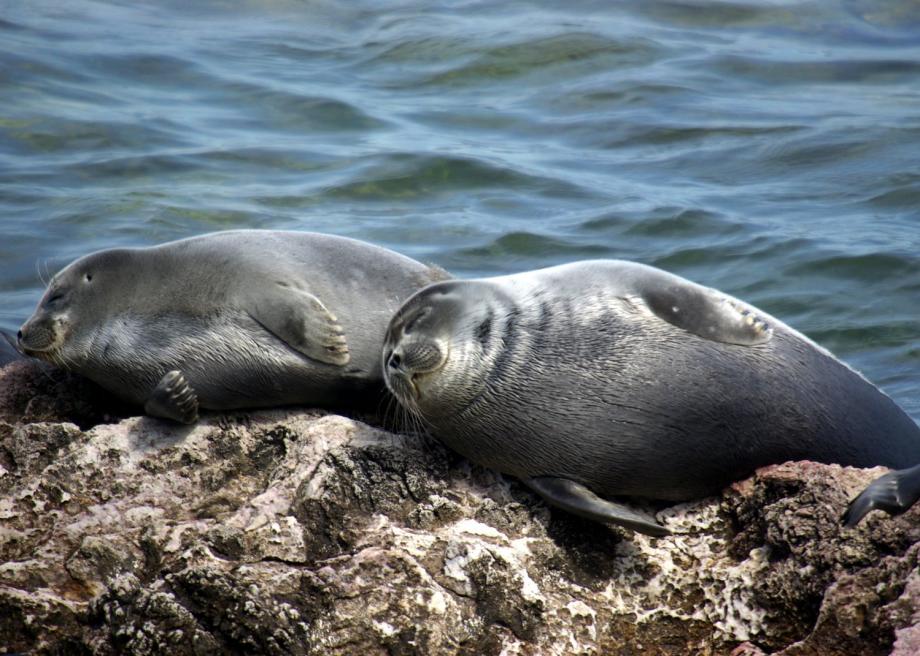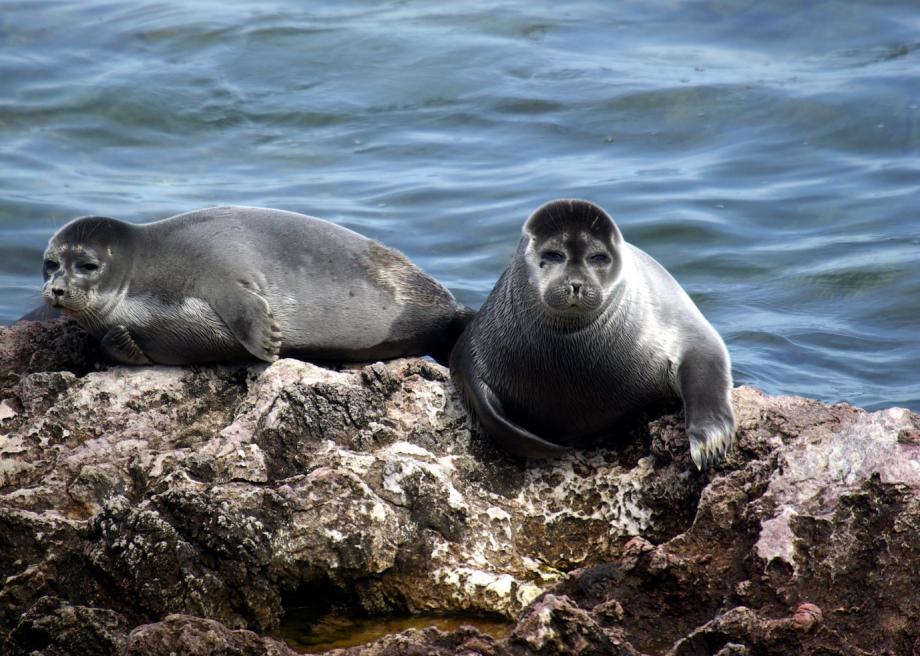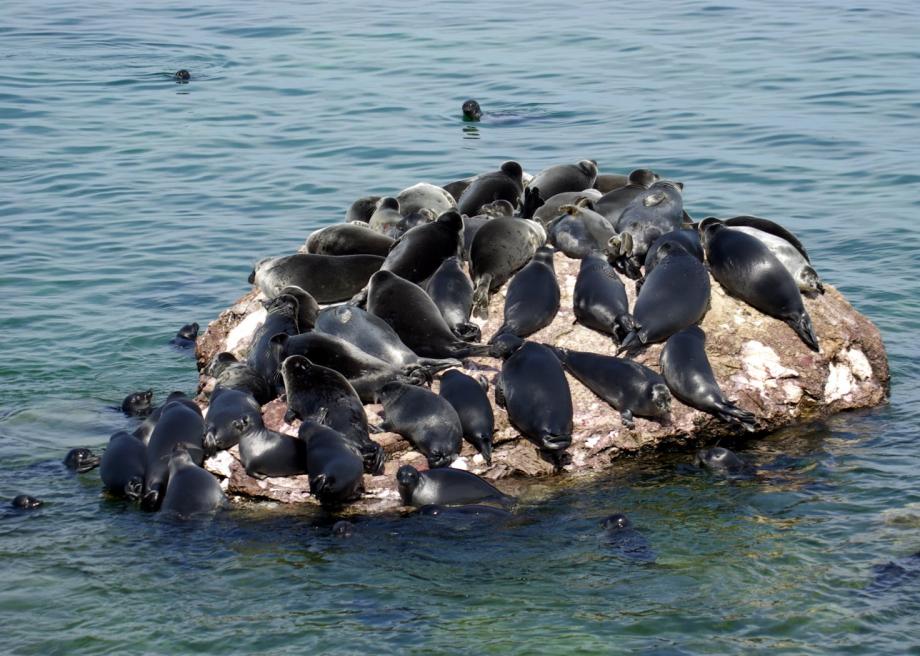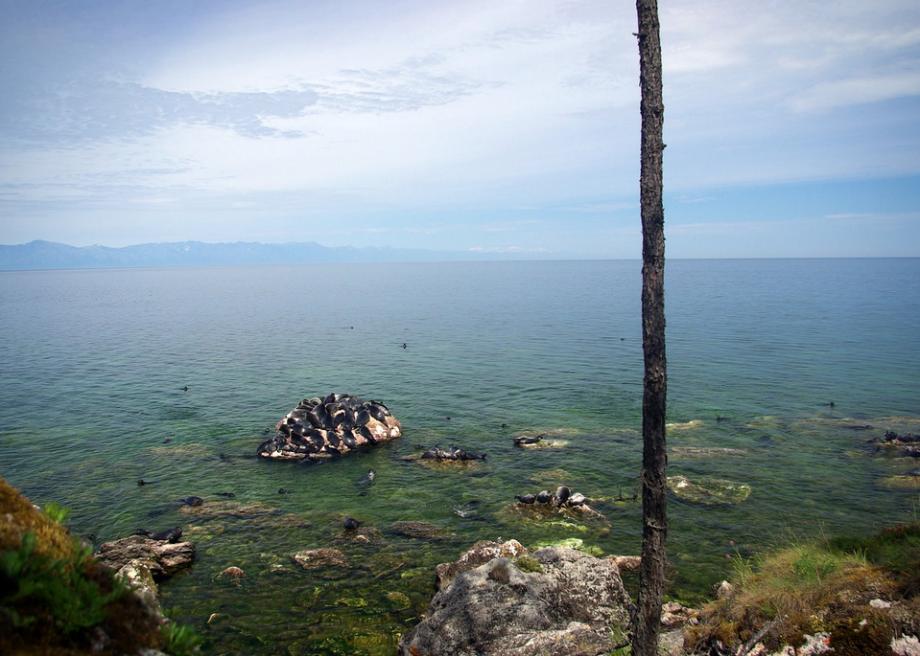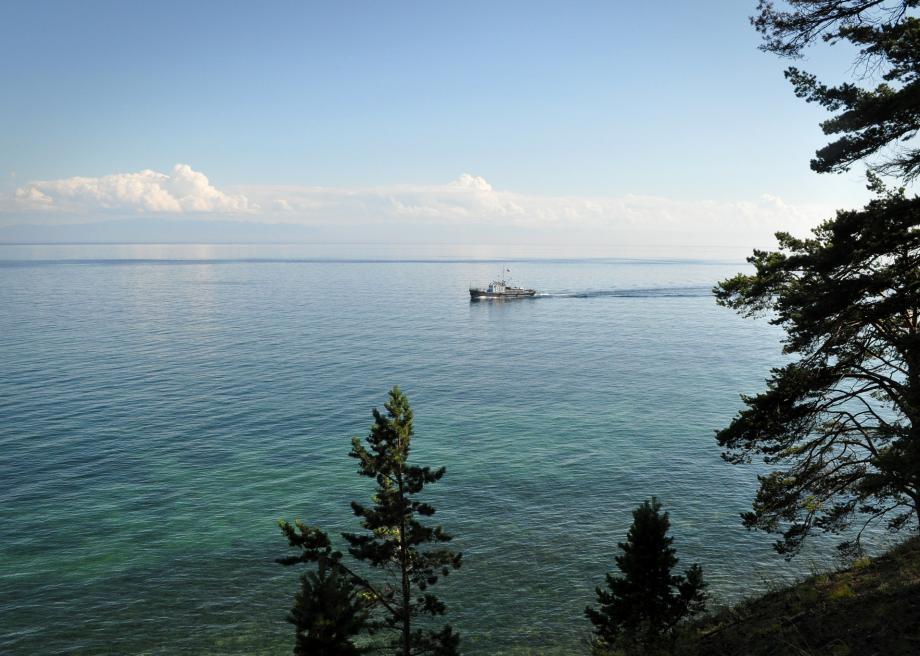The Special and Mysterious Seals of Siberia's Lake Baikal
Atlas Obscura on Slate is a blog about the world's hidden wonders. Like us on Facebook, Tumblr, or follow us on Twitter @atlasobscura.
Lake Baikal in southern Siberia is home to 80,000 seals. They spend their days zooming through the water in pursuit of delicious fish, crowding onto rocks to sun themselves, and, when winter hits, maintaining breathing holes in the three-foot-thick layer of ice that coats the lake.
It's all very charming and harmonious apart from one vexing matter: no-one can explain how the seals came to live in the lake.
Overwhelmingly, seals are marine mammals. Of the 33 existing species of pinnipeds—the taxonomic group that includes seals, sea lions, and walruses—only one lives exclusively in freshwater: the Baikal seal.
At an average of 150 pounds and just over four feet long, Baikals are among the more petite seal species. German naturalist Johann Friedrich Gmelin first dubbed the animals "Baikal seals" in 1788, but it was something of a name-and-run affair—he was under the impression that they were a variant of the standard harbor seal and therefore paid them little attention.
It wasn't until 1909 that scientists began to investigate the Baikals properly. During that year, volume 23 of the Seamen's Journal: A Journal of Seamen, by Seamen, for Seamen mentioned that "recently Dr. Charles Hose has obtained skins and skulls of two specimens of the Baikal seal."
What the write-up failed to include was British zoologist Hose's seal obtainment method. The doctor had stopped at the lake and convinced local fisherman to haul a trio of seals ashore. He then, according to Judith King's 1983 book, Seals of the World, climbed aboard his scheduled trans-Siberian train, and shoved the still-living seals onto the luggage rack. When two of the animals died during the journey, Hose performed dissections in his train car, to the annoyance of his fellow passengers.
The 1909 Seamen's Journal article said the seals in Lake Baikal, the largest freshwater lake in the world, "suggest that in former times an arm of the sea stretched from the Arctic Ocean to the site of the present lake. An elevation of the land then cut off a salt water lake containing seals and salmon, and in the course of ages this freshened to the present lake."
It's a possibility that still ranks highly on the "What Happened Here?" list. But with Lake Baikal clocking in at an estimated 30 million years old—and currently sitting hundreds of miles from any ocean—the question of exactly how the Baikal seals came to be remains a long, long-standing mystery.
View Lake Baikal in a larger map

